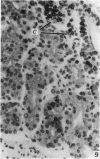Abstract
In the newborn mouse the glands of Brunner consist of a few tubular downgrowths from the proximal duodenal crypts. Within three weeks the characteristic 'comma' shape of the gland is established by later downgrowths from more distal growths. The gland cells, although specialized from birth, show a high mitotic index, and a high labelling index with 3H-T, during the first three weeks, and particularly during the first two weeks. Nevertheless, the daily mitotic rate during this period is insufficient to account for the daily addition of glandular cells, suggesting that there is a continuing contribution of cells from the crypts. After this time, however, the mitotic activity of the mature gland cells is sufficient to account for the continuing increase in cell population. After the fourth postnatal week the mitotic and labelling indices decline markedly, and although mitoses are rarely seen in individual sections from older animals, cellular addition at a very slow rate is sufficient to account for the gradual expansion in size of the gland, and the process continues long after the adult body weight has been established.
Full text
PDF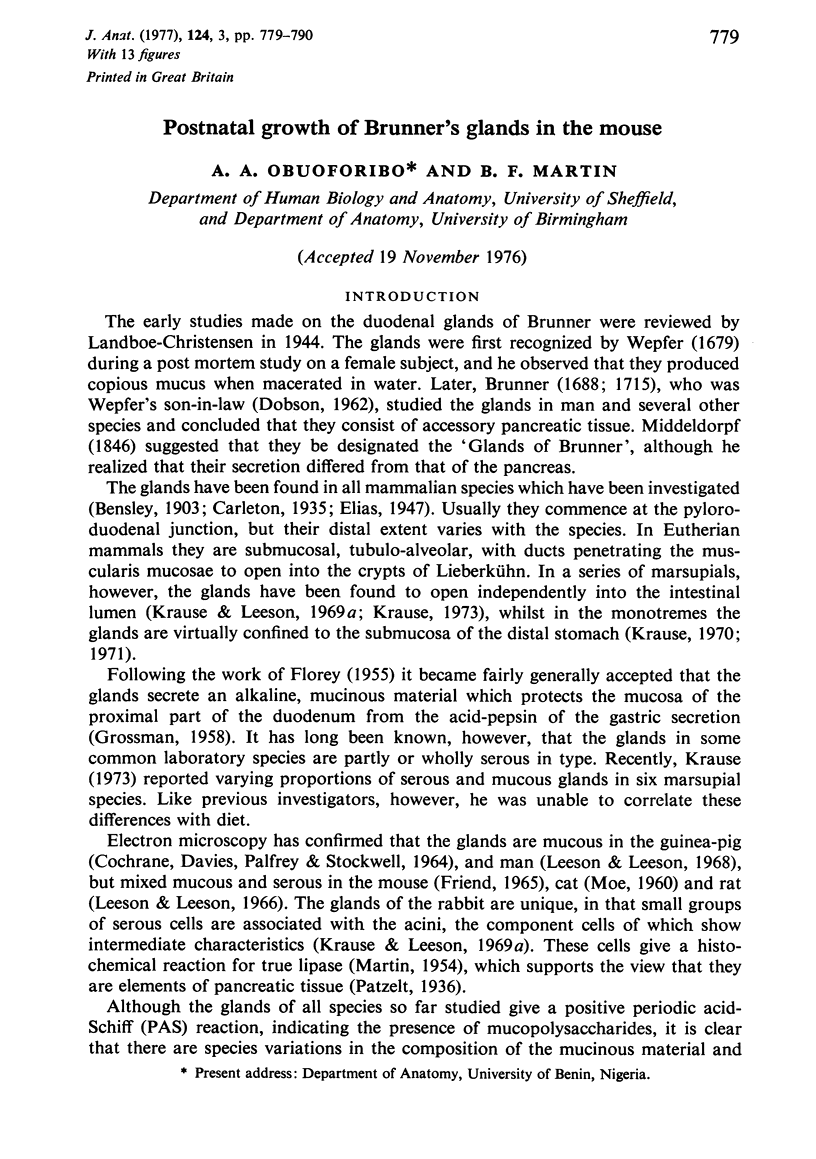
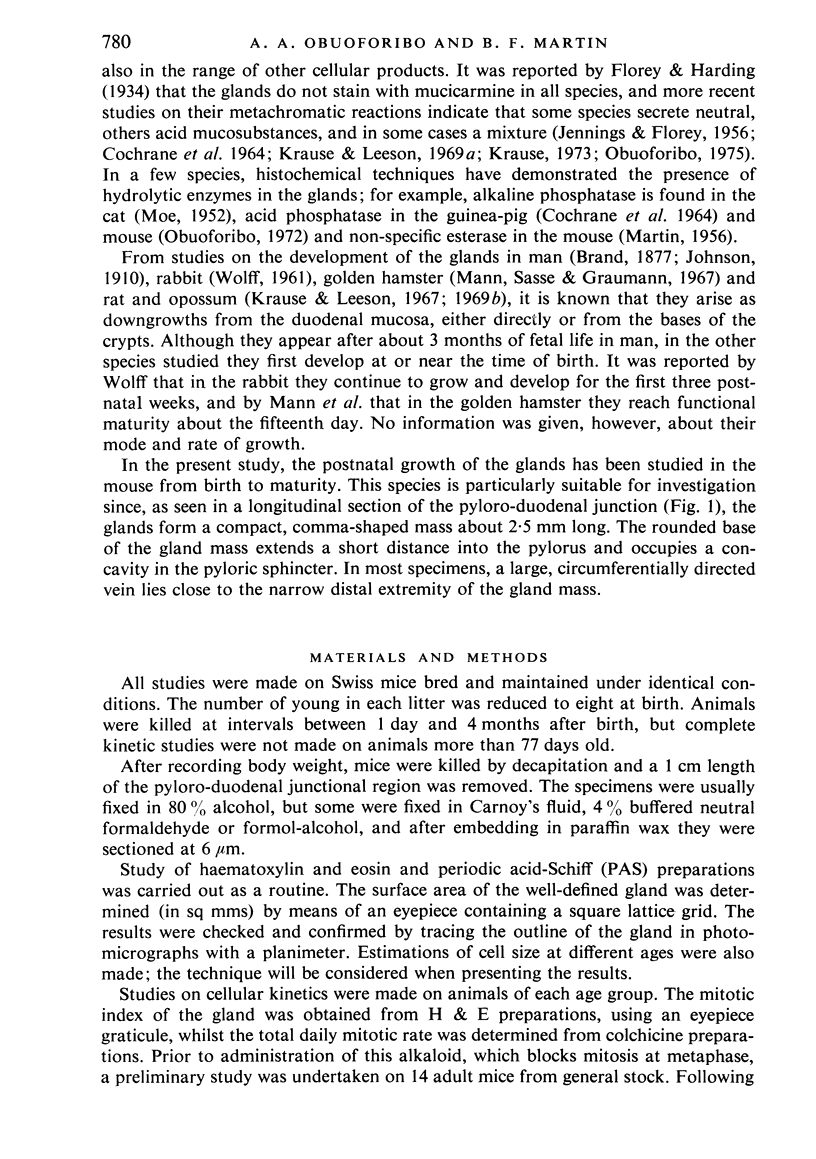
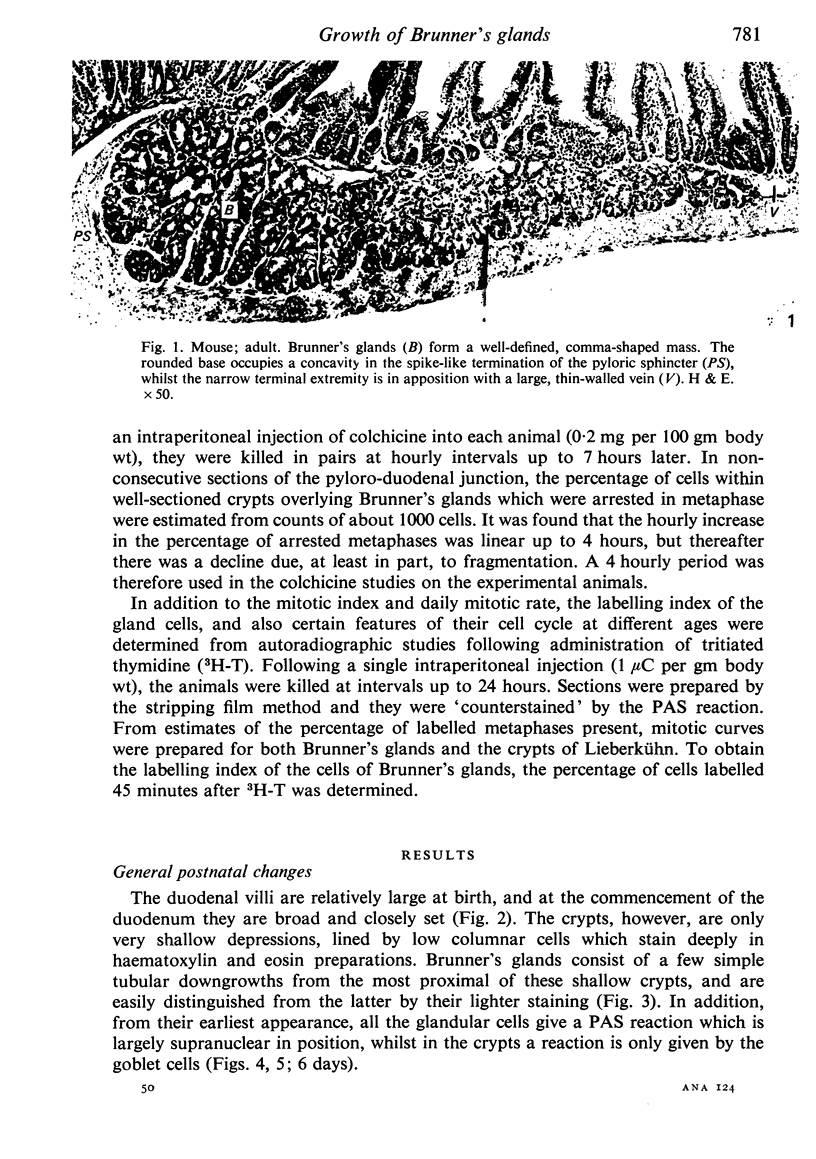
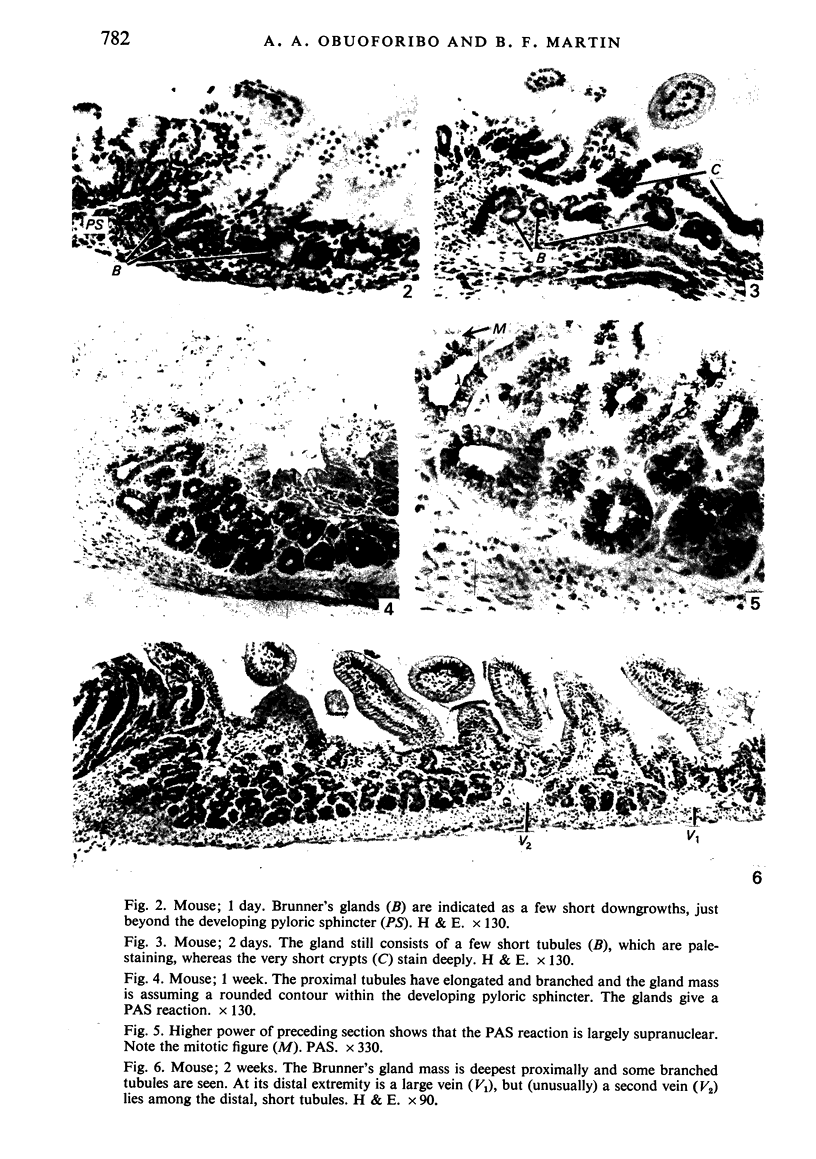
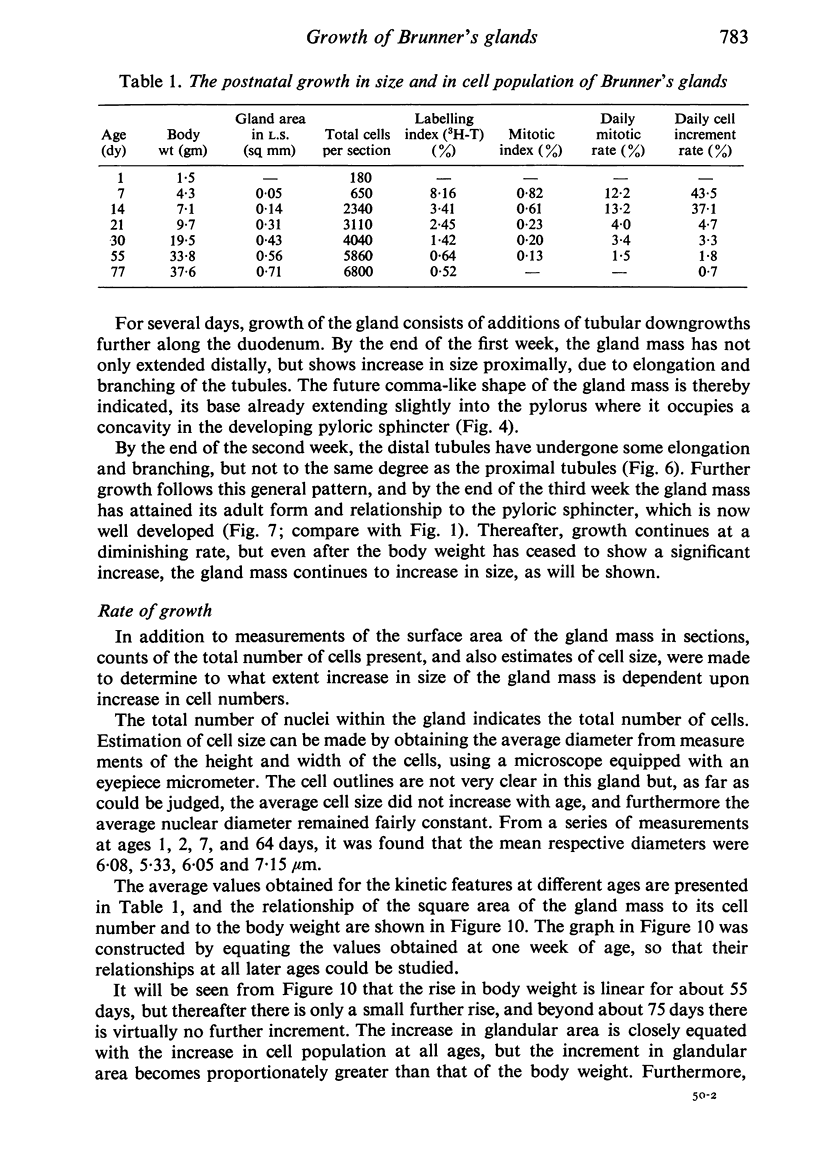
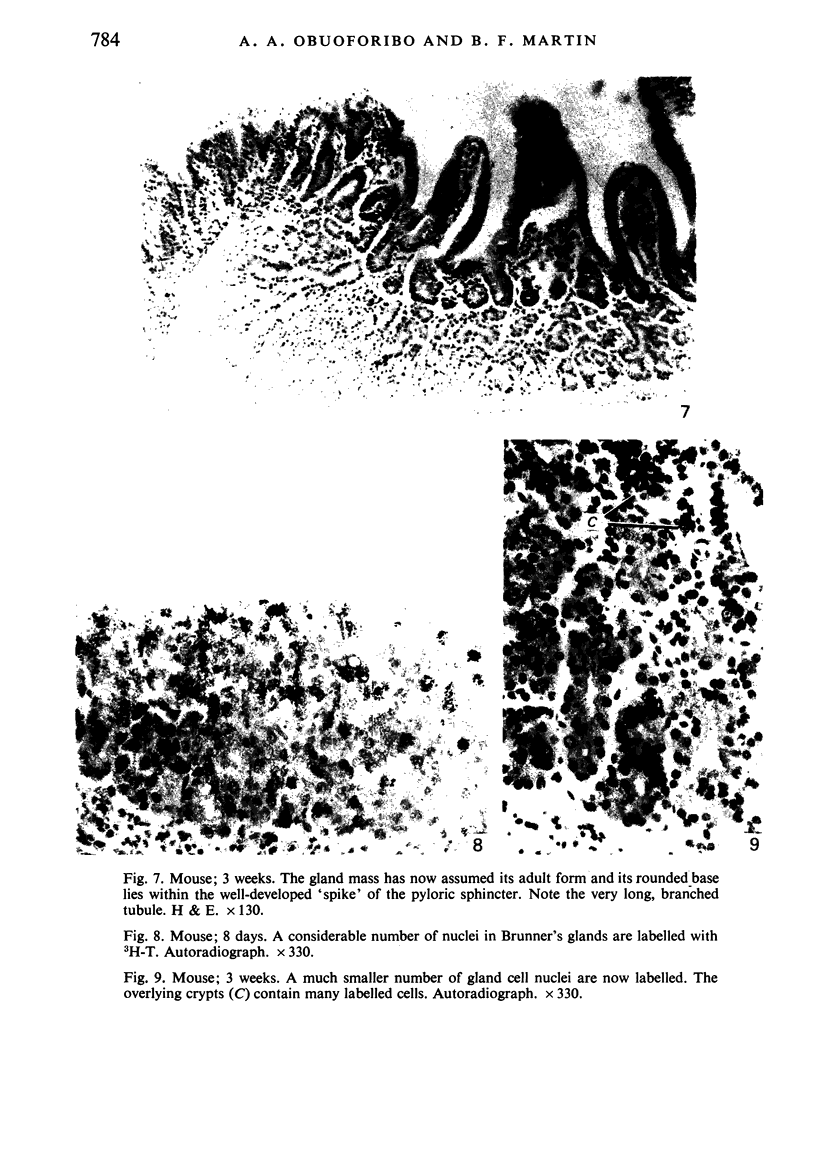
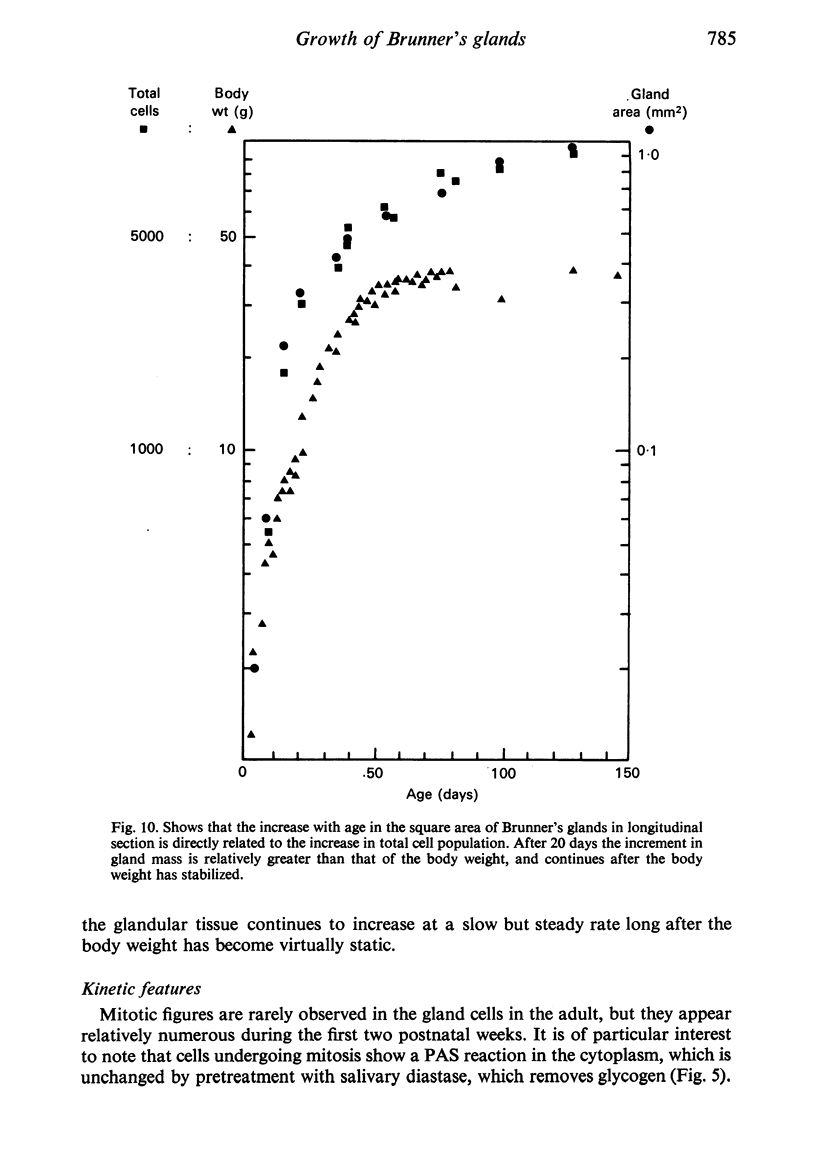
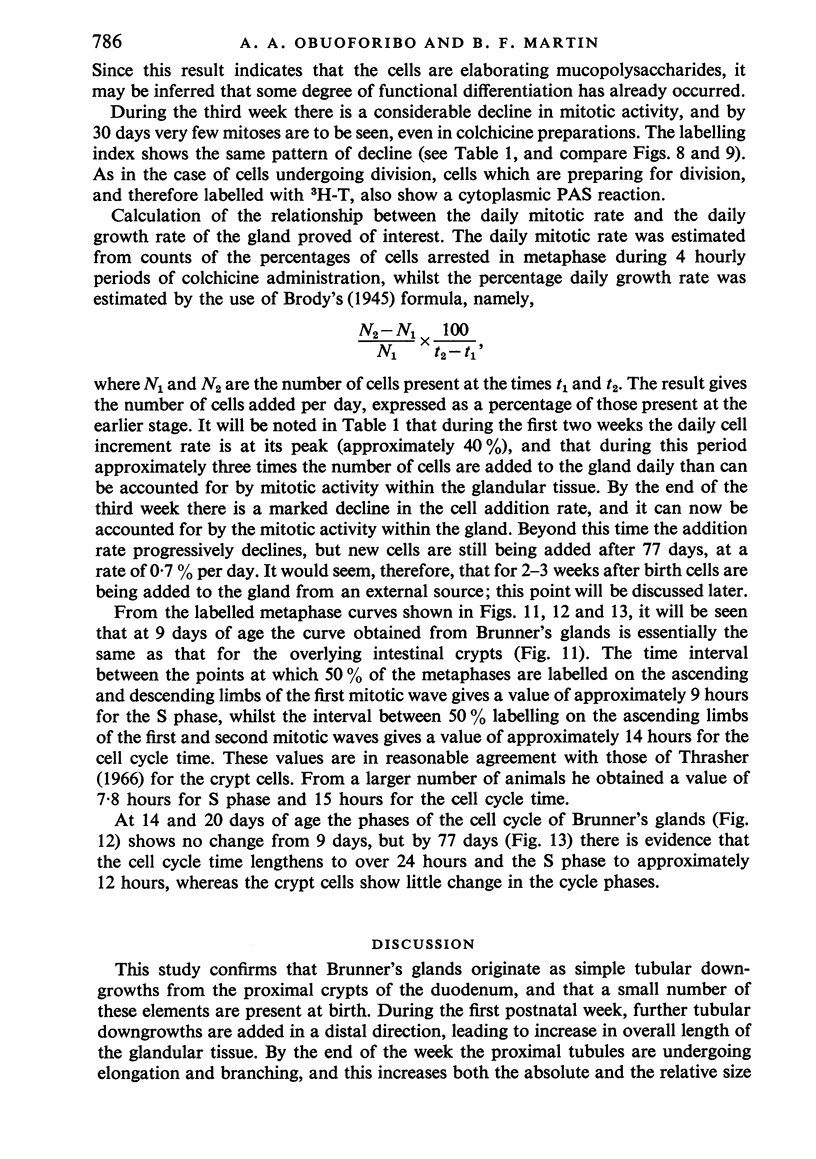
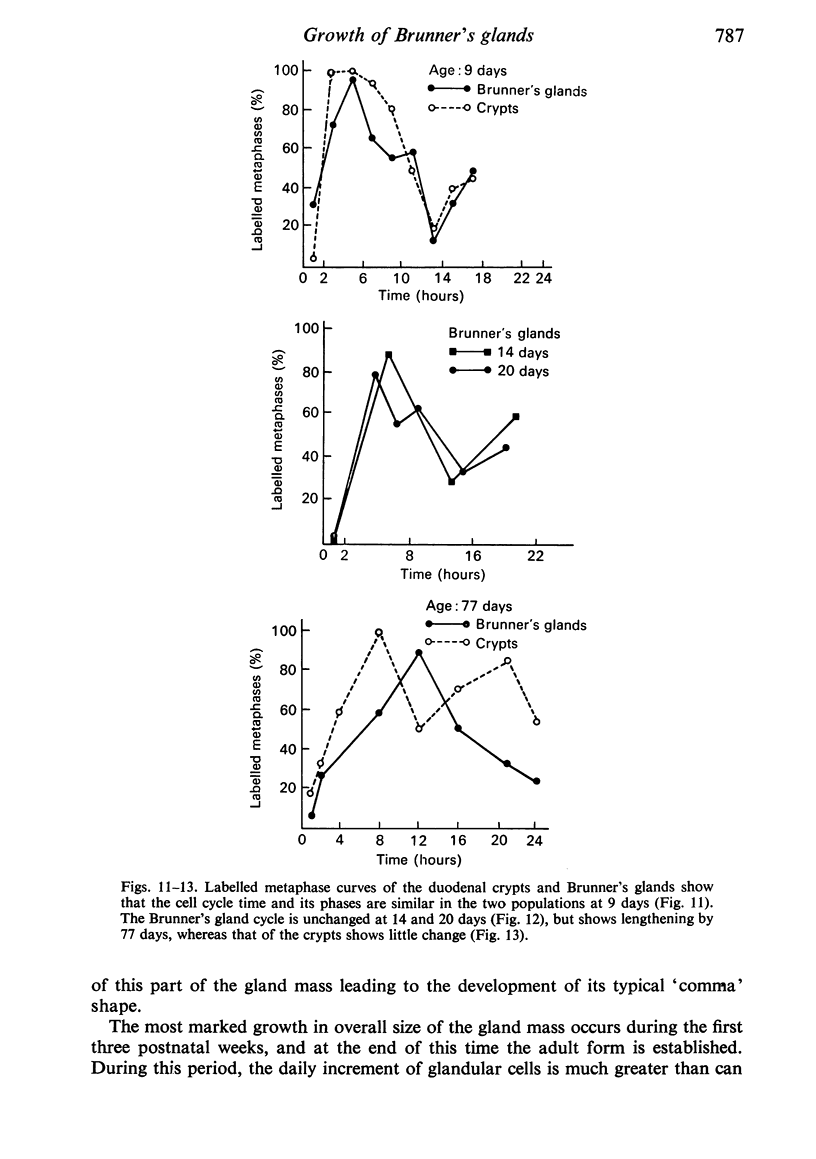
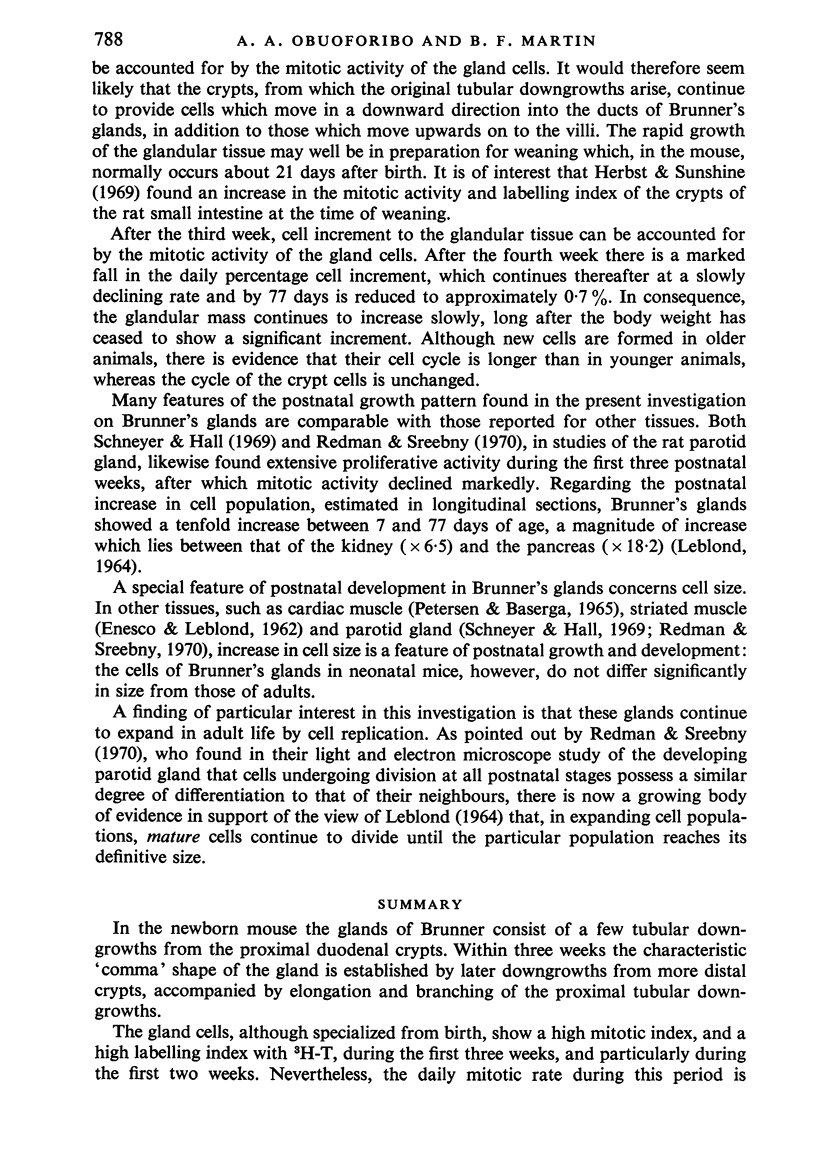
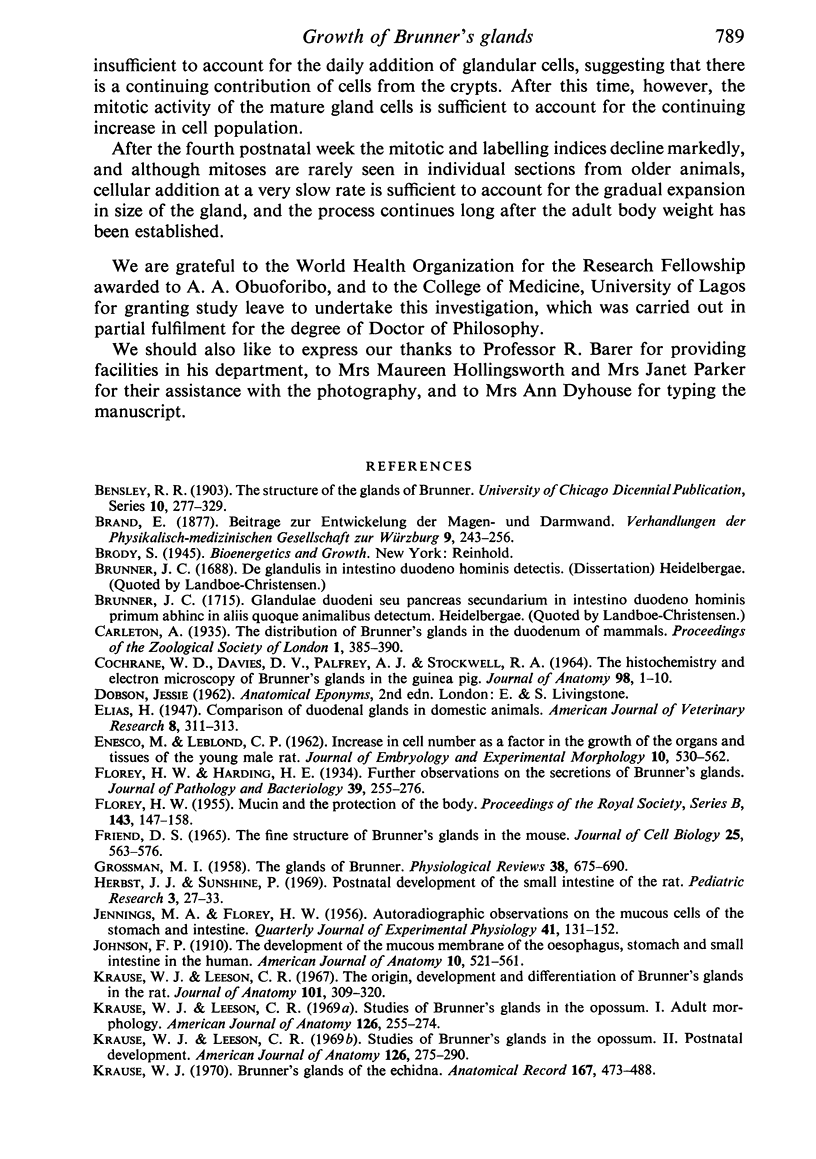
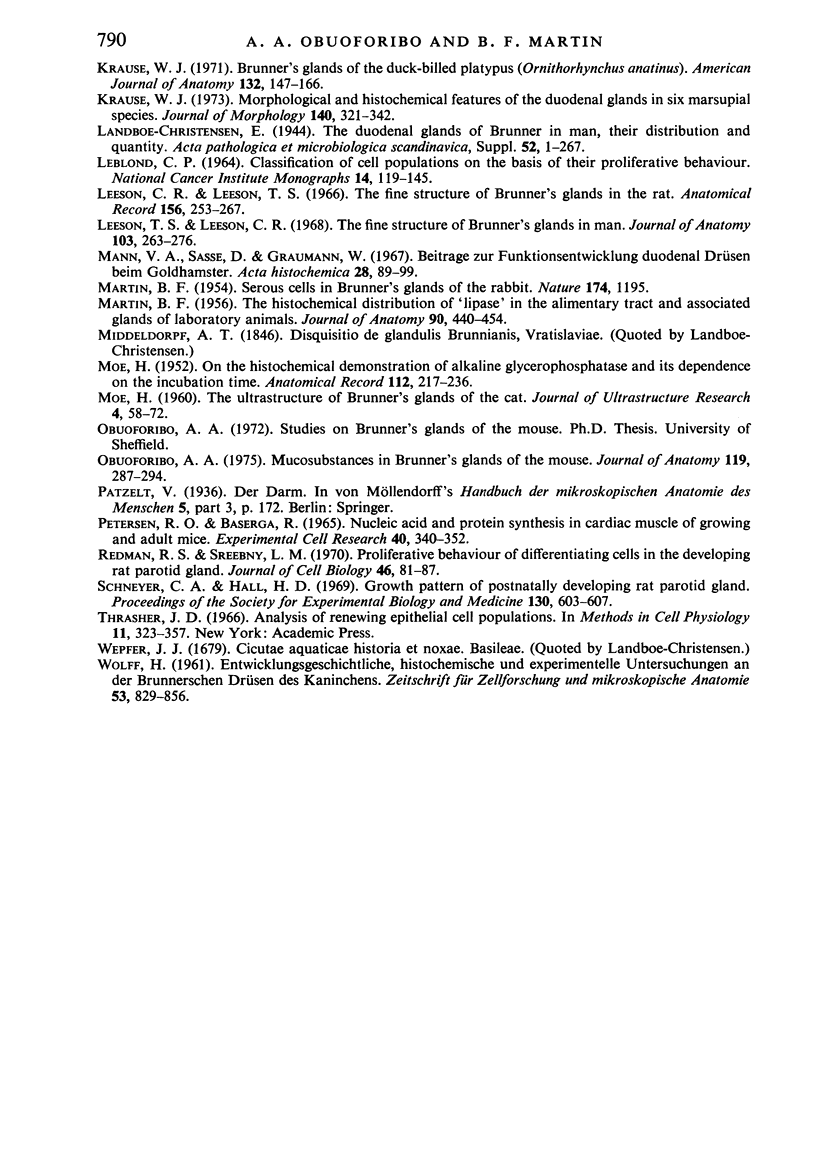
Images in this article
Selected References
These references are in PubMed. This may not be the complete list of references from this article.
- COCHRANE W., DAVIES D. V., PALFREY A. J., STOCKWELL R. A. THE HISTOCHEMISTRY AND ELECTRONMICROSCOPY OF BRUNNER'S GLANDS IN THE GUINEA-PIG. J Anat. 1964 Jan;98:1–10. [PMC free article] [PubMed] [Google Scholar]
- FLOREY H. Mucin and the protection of the body. Proc R Soc Lond B Biol Sci. 1955 Jan 27;143(911):147–158. doi: 10.1098/rspb.1955.0001. [DOI] [PubMed] [Google Scholar]
- Friend D. S. The fine structure of Brunner's glands in the mouse. J Cell Biol. 1965 Jun;25(3):563–576. doi: 10.1083/jcb.25.3.563. [DOI] [PMC free article] [PubMed] [Google Scholar]
- GROSSMAN M. L. The glands of Brunner. Physiol Rev. 1958 Oct;38(4):675–690. doi: 10.1152/physrev.1958.38.4.675. [DOI] [PubMed] [Google Scholar]
- Herbst J. J., Sunshine P. Postnatal development of the small intestine of the rat. Changes in mucosal morphology at weaning. Pediatr Res. 1969 Jan;3(1):27–33. doi: 10.1203/00006450-196901000-00004. [DOI] [PubMed] [Google Scholar]
- JENNINGS M. A., FLOREY H. W. Autoradiographic observations on the mucous cells of the stomach and intestine. Q J Exp Physiol Cogn Med Sci. 1956 Apr;41(2):131–152. doi: 10.1113/expphysiol.1956.sp001171. [DOI] [PubMed] [Google Scholar]
- Krause W. J. Brunner's glands of the duckbilled platypus (Ornithorhynchus anatinus). Am J Anat. 1971 Oct;132(2):147–165. doi: 10.1002/aja.1001320203. [DOI] [PubMed] [Google Scholar]
- Krause W. J. Brunner's glands of the echidna. Anat Rec. 1970 Aug;167(4):473–487. doi: 10.1002/ar.1091670408. [DOI] [PubMed] [Google Scholar]
- Krause W. J., Leeson C. R. Studies of Brunner's glands in the opossum. I. Adult morphology. Am J Anat. 1969 Nov;126(3):255–273. doi: 10.1002/aja.1001260302. [DOI] [PubMed] [Google Scholar]
- Krause W. J., Leeson C. R. Studies of Brunner's glands in the opossum. II. Postnatal development. Am J Anat. 1969 Nov;126(3):275–289. doi: 10.1002/aja.1001260303. [DOI] [PubMed] [Google Scholar]
- Krause W. J., Leeson C. R. The origin, development and differentiation of Brunner's glands in the rat. J Anat. 1967 Apr;101(Pt 2):309–320. [PMC free article] [PubMed] [Google Scholar]
- Krause W. J. Morphological and histochemical features of the duodenal glands in six marsupial species. J Morphol. 1973 Jul;140(3):321–341. doi: 10.1002/jmor.1051400306. [DOI] [PubMed] [Google Scholar]
- LEBLOND C. P. CLASSIFICATION OF CELL POPULATIONS ON THE BASIS OF THEIR PROLIFERATIVE BEHAVIOR. Natl Cancer Inst Monogr. 1964 May;14:119–150. [PubMed] [Google Scholar]
- Leeson T. S., Leeson C. R. The fine structure of Brunner's glands in man. J Anat. 1968 Sep;103(Pt 2):263–276. [PMC free article] [PubMed] [Google Scholar]
- MARTIN B. F. Serous cells in Brunner's glands of the rabbit. Nature. 1954 Dec 25;174(4443):1195–1196. doi: 10.1038/1741195b0. [DOI] [PubMed] [Google Scholar]
- MARTIN B. F. The histochemical distribution of lipase in the alimentary tract and associated glands of laboratory animals. J Anat. 1956 Jul;90(3):440–454. [PMC free article] [PubMed] [Google Scholar]
- MOE H. The ultrastructure of Brunner's glands of the cat. J Ultrastruct Res. 1960 Oct;4:58–72. doi: 10.1016/s0022-5320(60)80006-8. [DOI] [PubMed] [Google Scholar]
- Mann H., Sasse D., Graumann W. Beiträge zur Funktionsentwicklung: Duodenaldrüsen beim Goldhamster. Acta Histochem. 1967;28(1):89–99. [PubMed] [Google Scholar]
- Obuoforibo A. A. Mucosubstances in Brunner's glands of the mouse. J Anat. 1975 Apr;119(Pt 2):287–294. [PMC free article] [PubMed] [Google Scholar]
- Petersen R. O., Baserga R. Nucleic acid and protein synthesis in cardiac muscle of growing and adult mice. Exp Cell Res. 1965 Nov;40(2):340–352. doi: 10.1016/0014-4827(65)90267-3. [DOI] [PubMed] [Google Scholar]
- Redman R. S., Sreebny L. M. Proliferative behavior of differentiating cells in the developing rat parotid gland. J Cell Biol. 1970 Jul;46(1):81–87. doi: 10.1083/jcb.46.1.81. [DOI] [PMC free article] [PubMed] [Google Scholar]
- Schneyer C. A., Hall H. D. Growth pattern of postnatally developing rat parotid gland. Proc Soc Exp Biol Med. 1969 Feb;130(2):603–607. doi: 10.3181/00379727-130-33617. [DOI] [PubMed] [Google Scholar]











